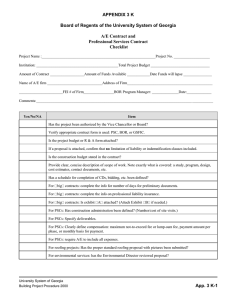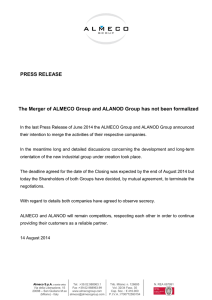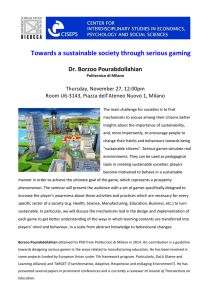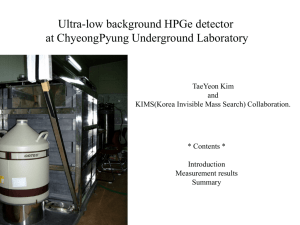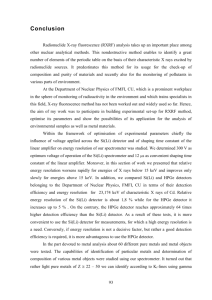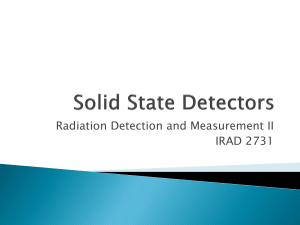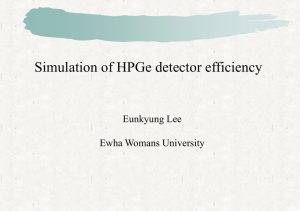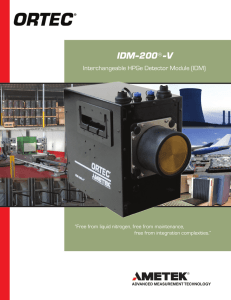Abstract_FCrespi_NSS2011_PSCS_2011 - (INFN)
advertisement
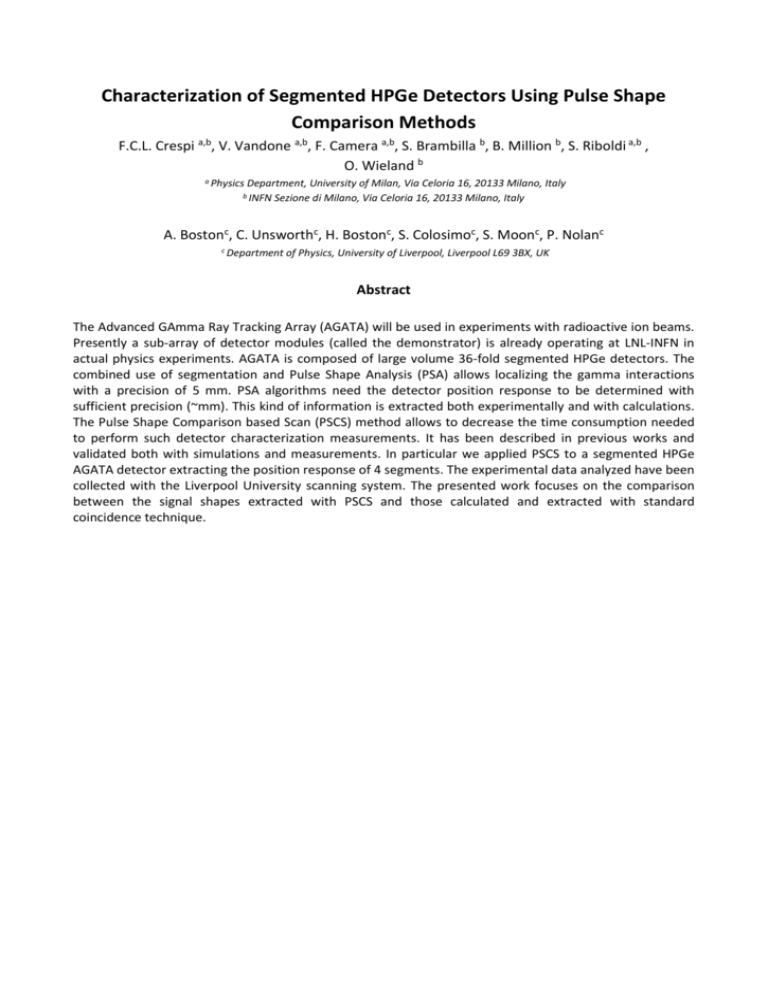
Characterization of Segmented HPGe Detectors Using Pulse Shape Comparison Methods F.C.L. Crespi a,b, V. Vandone a,b, F. Camera a,b, S. Brambilla b, B. Million b, S. Riboldi a,b , O. Wieland b a Physics Department, University of Milan, Via Celoria 16, 20133 Milano, Italy Sezione di Milano, Via Celoria 16, 20133 Milano, Italy b INFN A. Bostonc, C. Unsworthc, H. Bostonc, S. Colosimoc, S. Moonc, P. Nolanc c Department of Physics, University of Liverpool, Liverpool L69 3BX, UK Abstract The Advanced GAmma Ray Tracking Array (AGATA) will be used in experiments with radioactive ion beams. Presently a sub-array of detector modules (called the demonstrator) is already operating at LNL-INFN in actual physics experiments. AGATA is composed of large volume 36-fold segmented HPGe detectors. The combined use of segmentation and Pulse Shape Analysis (PSA) allows localizing the gamma interactions with a precision of 5 mm. PSA algorithms need the detector position response to be determined with sufficient precision (~mm). This kind of information is extracted both experimentally and with calculations. The Pulse Shape Comparison based Scan (PSCS) method allows to decrease the time consumption needed to perform such detector characterization measurements. It has been described in previous works and validated both with simulations and measurements. In particular we applied PSCS to a segmented HPGe AGATA detector extracting the position response of 4 segments. The experimental data analyzed have been collected with the Liverpool University scanning system. The presented work focuses on the comparison between the signal shapes extracted with PSCS and those calculated and extracted with standard coincidence technique.
